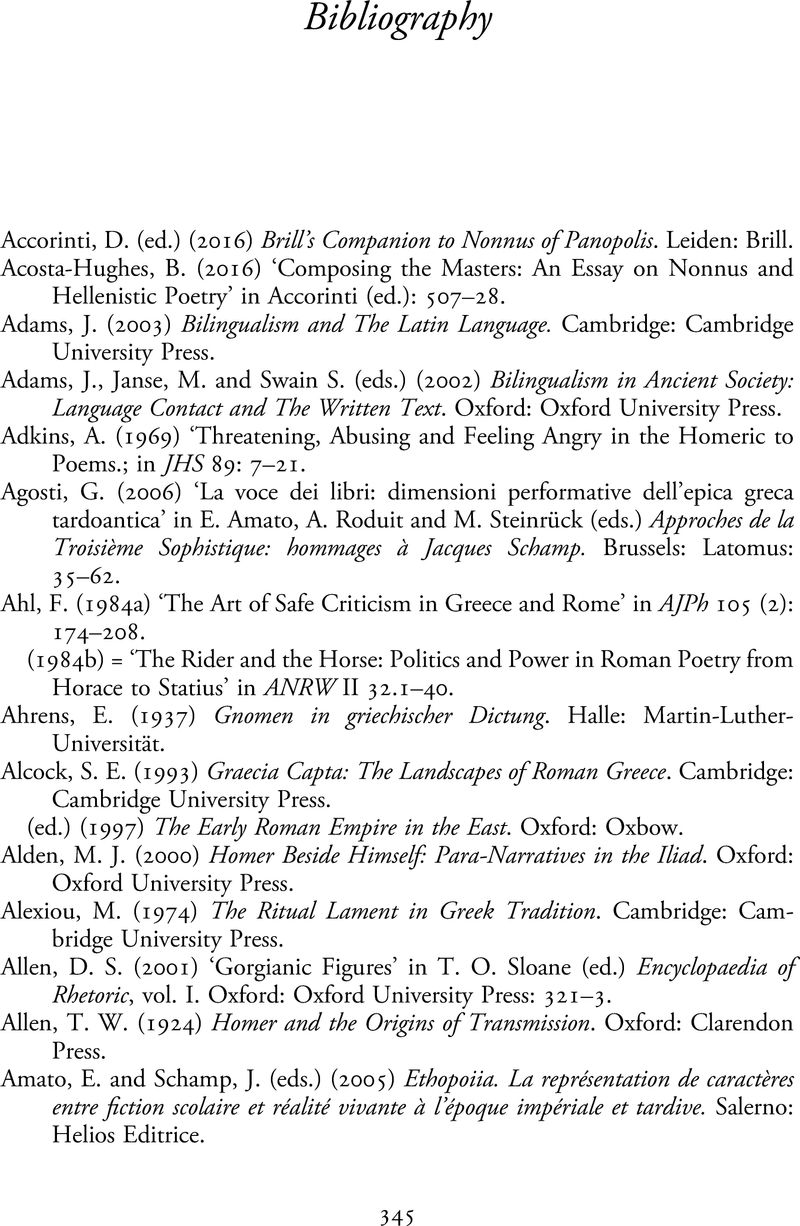 The Resurrection of Homer in Imperial Greek Epic
The Resurrection of Homer in Imperial Greek Epic Book contents
- The Resurrection of Homer in Imperial Greek Epic
- Greek Culture in the Roman World
- The Resurrection of Homer in Imperial Greek Epic
- Copyright page
- Dedication
- Contents
- Figures
- Acknowledgements
- Editions, Translations and Abbreviations
- Chapter 1 Beginning Again (Introduction)
- Part I Quintus as Homer: Illusion and Imitation
- Part II Quintus as Quintus: Antagonism and Assimilation
- Bibliography
- Index Locorum for Resurrection of Homer
- Subject index for Resurrection of Homer
- References
Bibliography
Published online by Cambridge University Press: 23 September 2020
- The Resurrection of Homer in Imperial Greek Epic
- Greek Culture in the Roman World
- The Resurrection of Homer in Imperial Greek Epic
- Copyright page
- Dedication
- Contents
- Figures
- Acknowledgements
- Editions, Translations and Abbreviations
- Chapter 1 Beginning Again (Introduction)
- Part I Quintus as Homer: Illusion and Imitation
- Part II Quintus as Quintus: Antagonism and Assimilation
- Bibliography
- Index Locorum for Resurrection of Homer
- Subject index for Resurrection of Homer
- References
Summary

- Type
- Chapter
- Information
- The Resurrection of Homer in Imperial Greek EpicQuintus Smyrnaeus' <I>Posthomerica</I> and the Poetics of Impersonation, pp. 345 - 373Publisher: Cambridge University PressPrint publication year: 2020
